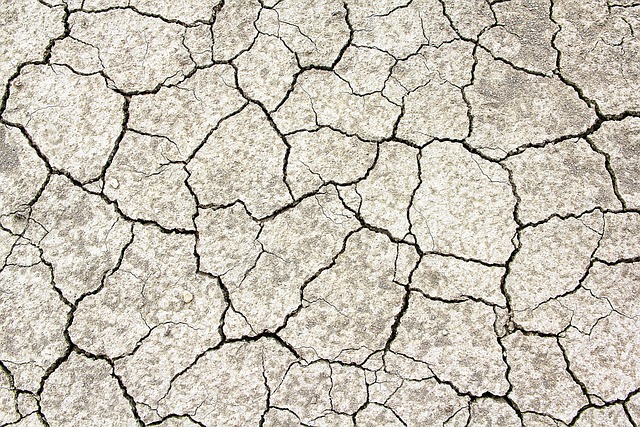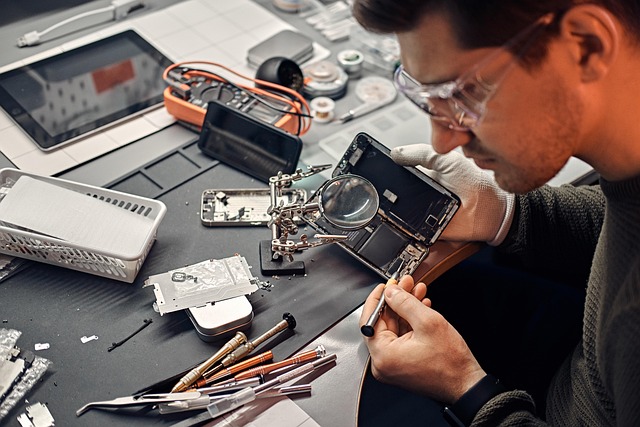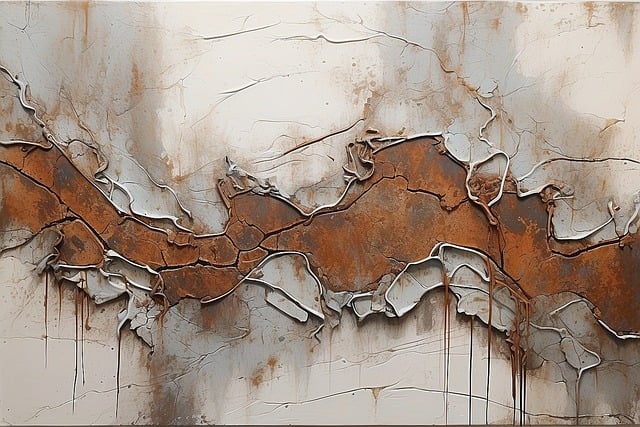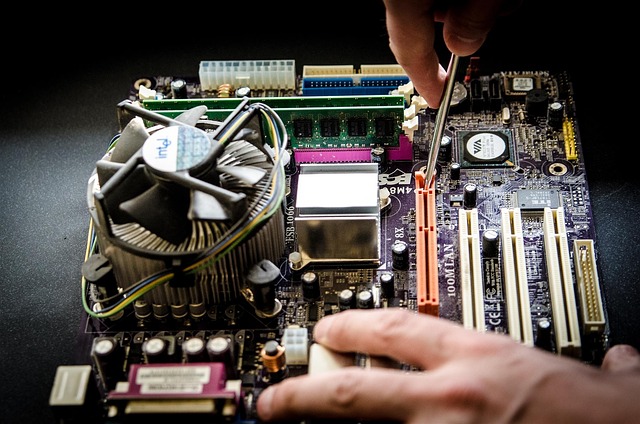Concrete cracks, from hairline to structural, signal various issues and require targeted repairs for long-term stability. Prompt crack fixing prevents water penetration, saves costs, and protects rebar. Proper preparation, high-quality materials (like concrete mix, crack fillers, sealants), and meticulous application ensure durable fixes. Regular maintenance, monitoring, and sealing prolong crack repair lifespans. Severe cracks may necessitate professional intervention for structural integrity.
Concrete cracks can range from cosmetic issues to structural concerns. Understanding the causes and types of concrete cracks is the first step in effective crack repair. Prompt crack repair prevents further damage and enhances the lifespan of your concrete surfaces. This comprehensive guide covers everything from identifying crack types and choosing the right materials to step-by-step repair processes, common mistakes to avoid, best practices for long-lasting results, and when to involve professionals. Master the art of crack repair for durable, pristine concrete.
Understanding Concrete Cracks: Causes and Types

Concrete cracks can vary in appearance and severity, each with its own underlying cause. Understanding these causes is crucial for effective crack repair. Common factors leading to concrete cracking include movement of the underlying soil or substrate, frost heave, dry conditions causing shrinkage, excessive traffic load, chemical attacks, and aging.
There are several types of cracks that can develop: hairline cracks, which are thin and shallow; diagonal cracks often seen in slabs on grade; vertical cracks caused by differential settling; and horizontal cracks typically resulting from heavy loads or structural issues. Each type requires a specific approach for crack repair to ensure longevity and stability of the concrete surface.
The Importance of Prompt Crack Repair

Crack repair, particularly prompt crack repair, is paramount for maintaining concrete structures. When cracks form, they can act as entry points for water and moisture, leading to further damage and deterioration over time. This is especially problematic in environments with fluctuating temperatures and heavy traffic loads, like commercial parking lots or busy roads.
Left unchecked, even small cracks can grow, compromising the structural integrity of the concrete. Prompt crack repair not only stops this progression but also prevents water penetration, which can save significant costs down the line by mitigating damage to the underlying rebar and avoiding more extensive repairs.
Materials and Methods for Effective Patching

When it comes to concrete patching and crack repair, the right materials and methods are paramount for long-lasting results. The first step involves preparing the cracked surface by cleaning it thoroughly to remove any debris, dust, or loose concrete. This ensures a clean bond between the repair material and the existing concrete, enhancing the overall durability of the patch.
For effective patching, a blend of high-quality concrete mix, often containing additional additives for improved flexibility and resistance, is crucial. This mixture is carefully applied over the crack, ensuring it fills the entire length and width. Once placed, the patch should be levelled and compacted to create a solid foundation. Depending on the severity of the crack, various techniques like carbon fibre reinforcement or epoxy injection can further strengthen the repair, providing exceptional Crack Repair solutions.
Step-by-Step Guide to Concrete Crack Repair

Concrete cracking can be a common issue, but fixing it doesn’t have to be complicated. Here’s a simple step-by-step guide for tackling crack repair. Begin by cleaning the cracked area thoroughly; remove any debris, dust, or loose concrete using a wire brush or high-pressure washer. This step ensures good adhesion for the repair material.
Next, apply an appropriate crack filler or epoxy to the crack, filling it completely. Use a trowel or putty knife to smooth the surface and ensure even distribution of the filler. Allow the filler to cure according to the manufacturer’s instructions before applying a final coat of sealer (if needed) to protect against further damage and water penetration.
Common Mistakes to Avoid During Crack Filling

When it comes to concrete crack repair, there are several common mistakes that homeowners and DIY enthusiasts should be aware of to ensure long-lasting results. One of the most frequent blunders is not properly preparing the surface before applying crack filler. It’s crucial to clean the area, removing any loose debris, dirt, or oil, as these contaminants can hinder adhesion and cause future issues. Ignoring this step often leads to an uneven finish and weak repair.
Another mistake is using the wrong type of crack filler for the job. Different cracks require specific materials. For wider cracks, a polymer-based filler might be more suitable, while smaller, hairline cracks may call for a polyurethane-based product. Using the incorrect filler can result in poor performance, accelerated deterioration, and eventual repair failure. Always match the crack filler to the type and severity of the crack for optimal repair outcomes.
Best Practices for Long-Lasting Results

When undertaking crack repair and concrete patching, adhering to best practices ensures long-lasting results. The first step is thorough preparation, involving cleaning the cracked area to remove any debris or loose concrete. This process creates a clean surface for the patch material to bond effectively. Using the right tools and materials is paramount; pick a patching compound suitable for outdoor concrete, and ensure it’s of high quality to resist moisture penetration and thermal expansion.
For precise application, use a trowel to fill the crack, ensuring complete coverage and smoothing the surface afterward. Allow the patch material to cure completely before subjecting it to traffic or heavy loads. Regular maintenance, including reapplication of sealers and coatings, can significantly extend the life of crack repairs. Prompt attention to cracks prevents their expansion, which can lead to more extensive and costly concrete repair down the line.
Choosing the Right Sealant or Epoxy for Your Project

When tackling crack repair, selecting the appropriate sealant or epoxy is a crucial step for ensuring long-lasting results. The right product will fill and seal cracks effectively, preventing further damage and water penetration. Consider factors like crack width and depth, environmental conditions, and traffic volume when making your selection. Wider or deeper cracks might require more robust epoxies, while smaller repairs could be suitable with a high-quality sealant.
Choosing the right material also depends on the specific needs of your project. For exterior concrete, weather-resistant sealants are essential to withstand exposure to sunlight and varying temperatures. Interior crack repair, on the other hand, may benefit from flexible sealants that accommodate minor movements without damaging the surface. Always read product labels and follow manufacturer guidelines for the best compatibility and long-term performance in your crack repair project.
Tips for Maintaining Repaired Concrete Surfaces

After concrete crack repair, maintaining the surface is crucial to ensure longevity and prevent future damage. Regular cleaning is essential; use a soft brush or vacuum to remove loose debris and dirt. Avoid power washers as they can damage the repair area. Apply a sealer once the concrete has cured completely; this protective layer shields against moisture, oil, and other stains, prolonging the life of the repair.
Monitor the repaired area for any new cracks or signs of wear. If issues arise, address them promptly. Regular inspection and maintenance will keep your concrete surfaces in top condition, ensuring a durable and aesthetically pleasing finish that can withstand the elements.
When to Call a Professional for Severe Cracks

If you notice severe cracks in your concrete surfaces, it might be time to consider professional crack repair. While minor cracks can often be addressed with DIY methods, more extensive damage requires expert intervention. Severe cracks can compromise the structural integrity of concrete structures, leading to further deterioration and safety hazards.
Professionals equipped with advanced tools and expertise can assess the extent of the damage and provide lasting solutions. They offer specialized techniques for crack repair, ensuring that the fixed area remains strong and stable. This is particularly crucial in high-traffic areas or structures supporting significant weight, where crack repair goes beyond aesthetics and delves into structural stability.
